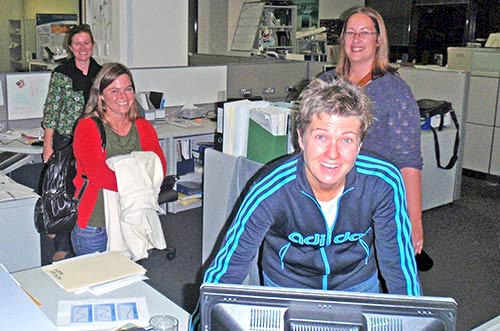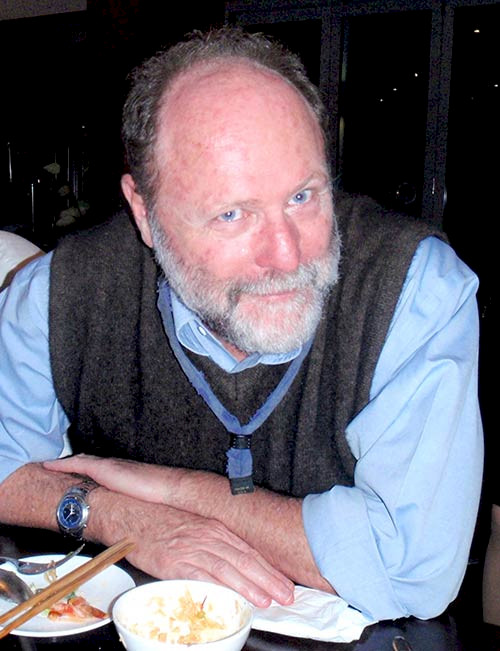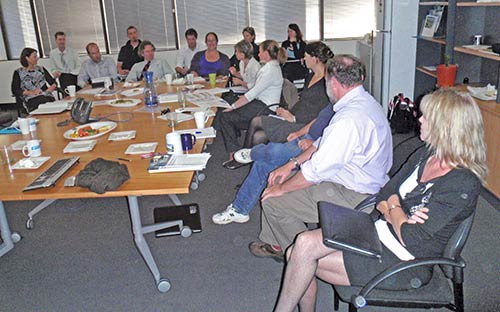Developing a Swan River report card
Bill Dennison ·The Swan-Canning River is the estuary adjacent to Perth, the capital of Western Australia, and its seaport, Fremantle at the mouth. The Swan is famous for its iconic black swans and has dolphins that regularly swim up to the foreshore of the central business district of Perth. It supports seagrasses (black swan food), prawns and fish, but has some severe water quality problems. For example, the dissolved oxygen levels are so chronically and severely depleted in bottom waters that the Western Australia Department of Water has two permanent oxygen plants that are used to inject oxygen into bottom waters. There are other symptoms of water quality problems such as declining fisheries, fish kills, harmful algal blooms, beach closures, fish contamination and dolphin deaths. There are two governmental entities that are tasked with managing the Swan-Canning River; Western Australia Department of Water and the Swan River Trust.
Kate Moore, a Brisbane-based Science Communicator and I came over to Perth to work with Malcolm Robb's Dept. of Water staff and Rod Hughes' Swan River Trust staff on an environmental report card for the Swan-Canning River. Kate worked with Malcolm's staff to develop a layout format for a trifold pamphlet for the report card before I arrived. We then scoped out data availability, discussed reporting considerations and developed a strategy for data analysis. We established the scale of the report card, with five reporting regions (Upper, Middle and Lower Swan Estuary and Upper and Lower Canning Estuary) that extended to the limit of marine and navigable reaches. We also established a temporal reporting period to extend between June 1 until the subsequent May 31. The choice of this period was to avoid splitting the summer or rainy winter periods or the autumn algal bloom period.

Once we had settled on spatial and temporal scales, and a suite of water quality parameters to be used as indicators, we developed thresholds and calculated report card scores. We then storyboarded a layout for the report card pamphlet and Kate worked with the Dept. of Water staff, particularly Catherine Thomson, Dr. Vanessa Forbes and Naomi Hellriegel to obtain images, maps and data for the report card pamphlet. Dr. Kieryn Kilminster led the development of conceptual diagrams of the Swan-Canning estuary. We assembled an initial draft of the report card and worked through revisions with Swan River Trust staff, particularly Dr. Kerry Trayler.
The timing of the report card creation was to coincide with the annual National Estuaries Network meeting, hosted by Malcolm Robb. I had hosted the original NEN meeting in the Brisbane region, as an outcome of the Land and Water Natural Resources Audit on Australian estuaries. Lynda Radke from Geosciences Australia, the group that have developed the fantastic Ozcoasts website (originally Ozestuaries), in which maps, conceptual diagrams and the available monitoring information for the one thousand plus estuaries around Australia is readily available.

We discussed the exciting possibility of having a report card on thesocial and economic aspects of the Swan-Canning estuary. This effort is being led by Roxane Shadbolt, Swan River Trust, and Dr. May Carter, Edith Cowan University. The term 'dueling report cards' came up, but I could see that an ecosystem health report with a social and economic report card could be quite complementary. Just as musical piece "Dueling Banjos" starts off separately, with the guitar playing "Do, do, do, do, do, do, doooo", and the banjo playing "Ba, ba, ba, ba, ba, ba, baaaaa", followed by short "Do, do, do, do, do" and "Ba, ba, ba, ba, ba", soon they are playing together with a pulse-quickening, toe-tapping intertwined musical duet. Being able to connect people with the Swan-Canning by assessing the ecosystem health and developing measures of community engagement would be creating an assessment of the health of the entire community. This duet of reporting would create a new standard of integrated environmental reporting.

About the author
Bill Dennison

Dr. Bill Dennison is a Professor of Marine Science and Vice President for Science Application at the University of Maryland Center for Environmental Science.
Next Post > A microcosm of the world's water quality problems: Peel-Harvey field trip
Comments
-
Bill Nuttle 15 years ago
Bill;
Can you provide a link to more information on the social/economic report card mentioned at the end of your posting?

